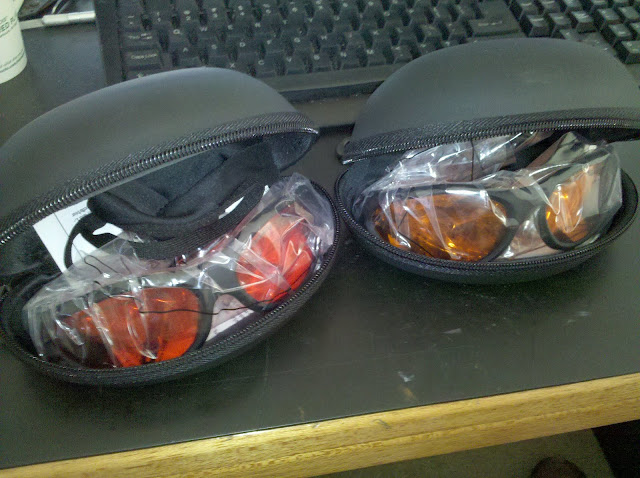Thanks for the info Steve!
I do note "afterimages" when using either my 130mW 532 or my 650mW 554nm lasers, but said afterimages last for about 30s and are only really noticeable if I close my eyes. A "direct hit" from my Canon 580EX (which sports a GN of 42) is worse, though, so I think as long as the afterimage is gone in <60s we should be ok?
Studies show its cumulative, and perhaps/does come back to bite you when your in your 40s, when macular degereration starts. There is some mild truth to the "blueblocker/UV blocker " sunglasses rage in the US.
Gone in 15 seconds would make me much happier.
Inverse square law is your friend. Add distance or turn down the beam.
I have to be intensely careful with this long term issue, because I work with arc, metal vapor, plasma, laser, and diode sources as how I make my living.
Summer sunlight at the equator is roughly 1.1 kilowatts per square meter at noon. If I did my math right there are 1,000,000 square millimeters in a square meter. So doing a little division you get 1.1 mW per mm^2. A 100 mW laser beam (lets assume hene like properties, and .65 mm diameter beam) at a short distance gives you better then 100 mW per square mm. (in fact a .65 mm diameter hene beam has a area of .33 mm^2, so about 2.8 times more power per area then a 1 mm^2 beam) say 280 mW per mm^2. So its safe to say your spot is 100x greater then the sun light your eye was designed for or adapted to. Provided the spot is the same distance away as the ground you normally look at, and assuming a diffuse cosine scattering surface.
You get the idea.
I just had a little something to drink, so some one check my math. I rarely drink, for medical and religious reasons. I'm sure math plus alcohol = error.
A little correction, now that I'm more sober. Maybe 150 watts of that one point one kilowatts per meter is visible or near IR and gets past the cornea. So the sunlight/hene ratio is a bit off, but the hene is still roughly 100 times brighter and the pointer 100 x that.
You get the idea.
.
Steve




